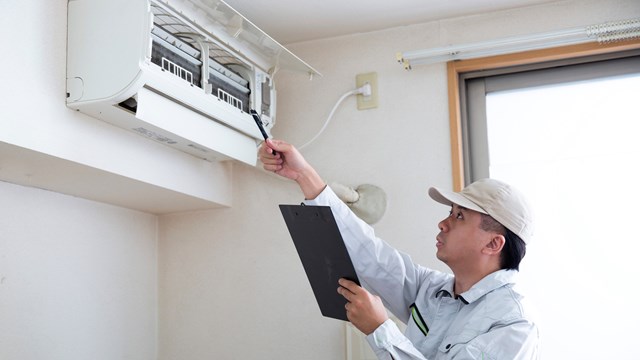
Lighting in the U.S. alone accounts for approximately 22 percent of all electricity used, according to the U.S. Department of Energy. It is no wonder that in the current economic and environmentally-sensitive climate a lot of effort is going towards finding, improving and engineering new and improved light sources. Enter light-emitting diodes, better known as LEDs.
Despite the fact that LEDs have been around for decades, they have in recent years (with product improvements) become the most promising “low hanging fruit” around for energy conservation in lighting.
Using far less energy than even Compact Fluorescent Lights (CFLs) – today’s gold standard for thriftiness – they also promise life spans many times longer than conventional lighting. For this reason, LEDs are turning up in High-Def TVs, in your local hardware aisle and in early-adopter condominiums.
$40,000 Per Year Savings
Condos looking to invest in LED technology are hoping to see positive results along the lines of the Palace Pier in Toronto, Canada. This 46-floor condo complex underwent a $2.4 million lighting renovation in 2008. The traditional halogen lights in all the interior corridors were replaced with new LED lights. Usage shifted dramatically from 35 watts of electricity under the old lighting to only 4 watts after the conversion. It’s predicted that the Palace Pier will use 87% less energy and the switch from halogen to LED will eventually save approximately $40,000 per year with an estimated 110-ton reduction in greenhouse gas emissions.
Along with condominiums, numerous cities around the world are switching to LEDs, including Boston, which recently upgraded sections of its oldest park, the Boston Common. The LEDs are predicted to use less than half of the energy of the previous lights and last three to four times longer, while generating about half as much carbon emissions as before. Boston has also been replacing traffic signals and pedestrian crossing lights with LEDs at a costsavings of nearly $400,000 annually.
As Boston is finding, exterior lighting is where the biggest bang for the LED buck might be found. And that is where condos could achieve the greatest savings as well.
Condo Exterior Use
Today, metal halide and sodium- or mercury-vapor lamps are typically used for condo parking lots and garage lighting. One of the biggest advantages LEDs have over competing technologies is that they can deliver excellent lighting on the ground or pavement. “Outdoor lighting is where a huge amount of activity with LEDs is taking place and can be a great application for LEDs. LEDs will generally beat metal halide on energy and maintenance costs, and fixture costs are coming down. LEDs also can be switched on and off easily allowing the use of motion sensors to save energy. But anyone interested in usingLEDs should carefully evaluate for glare and color – which are a problem with many LED outdoor fixtures,” said Glenn Heinmiller, IALD, LEED AP, LC, a principal at Lam Partners, an architectural lighting design firm located in Cambridge, Massachusetts.
A shopping plaza in Manchester, New Hampshire saved considerable money by taking advantage of LED’s outdoor strengths. The shopping plaza, off South Willow Street and anchored by retailer TJ Maxx, replaced 22 high-pressure sodium lights and six metal-halide lights with 25 LEDs. “Occupancy sensors” were also installed, allowing light output to change from low levelsof light to high levels when cars were present. This not only resulted in a 58% energy savings but the return on investment is expected to take only three years.
LEDs seem to work extremely well for exterior lighting in illuminating streets, walkways and general condo property. “Because outdoor color rendering is not as important, LEDs lend themselves well to exteriors,” according to Mike Wapner, lead analyst on the “Energy Efficient Lighting for Commercial Markets” report from Pike Research in Boulder, Colorado. But condos should make sure that installed outdoor LEDs are able to keep dust and water vapors out of the fixture, he notes.
Condo Interior Use
LEDs also work well indoors but in the right location. As the Palace Pier found, to get the most from their investment, condos should concentrate installing the lighting in areas that get the most use and require consistent long-duration illumination.
Lobbies and hallways are potentiallywell-suited for LEDs whereas little-used mechanical rooms and closets are not particularly good applications and will have a far greater payback time. Low-traffic, low-use environments lend themselves better to use of fluorescents.
Furthermore, condos can take advantage of the design flexibility and creativepossibilities of LEDs. “LEDs work with small points of source lights. Currently they are clustered together to form a light bulb of sorts. But you can rope it and design with it as you will. LEDs also lend themselves well to color changes,” explains Wapner.
Compared to compact fluorescent lights, which are commonly used in condos, LEDs can prove a promising alternative if utilized correctly. “CFLs are better at creating soft patterns of light, where light is emitted in all directions, such as a wall sconce or a decorative glowing pendant. LEDs are better at producing focused beams of light, such as the light emitted in a track head to accent artwork or a recessed down light,” said Naomi Miller, senior lighting engineer at the Pacific Northwest National Laboratory (a Department of Energy lab) in Portland, Oregon.
“Another advantage of LEDs compared to traditional lighting is that LEDs do not contain mercury. They are safer on the environment in that way,” Wapner points out, a reference to wide-spreadconcern over mercury in CFLs and their resulting disposal issues.
Remember that LEDs also need to be properly disposed of. Condos should follow the guidelines outlined by the manufacturer and the federal government.
Advantages with Caveats
Because LEDs are new and evolving rapidly, there are overstated claims about their performance, cost savings and life span. And sorting through the hype to get to the truth about LEDs can be challenging for any condo. As Wapner says, “A lot of claims are being made about what LEDs can and cannotdo, specifically about their product life and efficiency.”
These misguided claims occur partly because many situationally-dependent variables come into play when assessing cost, efficiency and life span of LEDs. “When it comes to LEDs, there is no better situation where the word ‘depends’ fits better,” said Wapner. The technology is also changing so fast that most individuals find it hard to keep up with the ever-shifting product specs.
FAQs about LEDs
Cost
Most local utility providers and state energy offices now provide incentive programs to condos making the switch to energy-efficient LEDs. Incentive programs aside, condos can save money; however, calculating just how much in savings will depend on many factors. These include:
• The type of LED lighting product selected.
• The expense of maintenance and upkeep (depends on the product selected).
• The cost of energy in the area the condo is located.
• The number of hours the LED lighting operates.
Miller recommends condos consult with a lighting specialist, lighting engineer or a lighting architect when exploring LED cost. Experts will be able to do a cost analysis to determine the condo’s return on investment. “Thetechnology is new enough that a specialist who is up to speed on LEDs is worth the money,” said Miller.
Life Span
LEDs should not be thought of as your average light bulb. In fact, they are typically not a bulb at all. “LEDs are lighting systems that have many different components to it and not simply a light bulb,” explains Wapner. “You have a whole system that works together with differing parts and elements to create light. It is not as simpleas it used to be.”
LEDs at their core are comprised of a driver and an LED chip. “LED products have a “driver,” which may be a collection of components. It may include a transformer or power supply, and a tiny integrated circuit that controls current to the LED itself. Again, it varies all over the map,” according to Miller.
The multiple components that encompass LEDs need to be factored into the life span equation as well. What it boils down to is more parts, the more potential for breakage – and not all components are created equal – performance-wise. “The LED chip itself may last 25,000 to 50,000 hours or longer. However, the driver/power supply may not last that long. It depends on the product design and the heat it dissipates and the heat of the environment in which it is operating,” said Miller.
“Because LEDs don’t burn out, they just fade away, LEDs end-of-life is considered to be when the output has diminished to 70% of its initial output. An LED fixture that claims a typical 50,000 hour life would reach its end-of-life in about five years if operated 24/7,” Heinmiller said.
Warranties
Typically, a three- to five-year warrantyis given on LEDs. But Wapner warns “if condos will be using the LEDs less than 24/7 then a three- to five-year warranty might not be a long enough warranty.” Condos might need to negotiate a longer warranty on their LED products. Likewise it is important that condos make sure they get a warranty on the life, light output, and color consistency of the LED.
Light Quality
“You get what you pay for” could not be a better saying when it comes to LED light quality. “Yes, there is a cost differential between nice light and ugly light with LEDs. At this time the more expensive the LEDs, the better quality light,” said Miller.
Condos should “test” the LEDs out before fully installing them. Questionsto ask are: is the color and lighting being given off flattering to skin tones? Are the architectural finishes in a space being enhanced or diminished by the introduction of the LEDs? Is any amount of flicker being created? And how much glare is produced?
Wave of the Future...Here to Stay
Manufacturers today are bringing to market LEDs that are packaged more conventionally like a traditional bulb. Heavy hitters such as GE and Panasonic are jumping on the LED bandwagon with LED bulbs that have adaptive-fit capabilities for screw-in fixtures. Still considered on the cusp of new technologies, these bulbs presently have a fairly high price point and the entrance of these powerhouses into the LED lighting market comes with some healthy skepticism. However, Miller has a different spin: “It means LEDs are a technology that is here to stay. The major players are producing some good products and backing them up with their reputation and a warranty, but we should add that some of the newplayers in the market are producing impressive products as well.”
As more residential buildings join the movement toward greener, more efficient daily operations, LEDs and other emerging technologies offer options for illuminating indoor and outdoor spaces while easing communities’ bottom lines and carbon footprints. Before your building super or handyman replaces another burned-out incandescent bulb, it might be a bright idea to look into these earth-friendly alternatives.
Hillary Pember is a freelance writer and a frequent contributor to New England Condominium magazine.






Leave a Comment